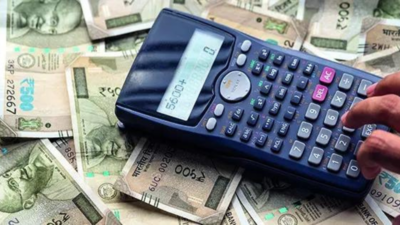UPI transactions hit new high in May but cash still thriving

MUMBAI: Even as the country hurtles toward a digital future with the Unified Payments Interface (UPI) clocking 60 crore transactions a day, a curious contradiction persists: cash is thriving.In the month of May, UPI transactions hit a a record 1868 crore transactions for Rs 25.1 lakh crore, up from 1789 crore (Rs 23.9 lakh crore) in April.However, at the end of March, currency in circulation was a record Rs 36.86 lakh crore. The Rs 500 note, in particular, has become the dominant form of cash, making up 41 per cent of all banknotes by volume and accounting for a staggering 86 per cent of total value. In contrast, smaller denominations such as Rs 20, Rs 50, Rs 100 and Rs 200 together account for less than that, both in number (35.6 per cent) and value (10.9 per cent) -despite the state’s push for a more granular, digitised cash economy.Finance minister Nirmala Sitharaman recently reiterated the government’s commitment to smaller denominations and digital payments, noting efforts to ensure that “currency will be in the lower denominations, used much more than the higher.” In April, the Reserve Bank of India mandated that by Sept 30, 2025, at least 75 per cent of ATMs must be capable of dispensing Rs 100 or Rs 200 notes, with this figure rising to 90 per cent by March 2026. The goal is to reduce dependence on high-value notes and improve everyday transactional ease.Yet the resurgence of cash is not driven by transaction needs. Bankers say the phenomenon is better explained by precautionary hoarding, a behavioural legacy of the Covid pandemic. An RBI study supports this view, drawing links between cash usage and perceived economic insecurity. The study, intriguingly, uses satellite images of nighttime illumination as a proxy for economic activity. It finds a correlation between brighter regions-indicative of higher GDP and tax collection-and lower currency use. As formal economic activity rises, cash in circulation tends to fall. The recent spike in cash, the RBI suggests, reflects a lingering preference for liquidity in uncertain times.This is not unprecedented. From 2005 to 2014, the rapid rollout of ATMs corresponded with a drop in household cash holdings, as easier access reduced the perceived need to store wealth in physical currency, the RBI study said. But the pandemic has reversed some of that progress. For now, even in a nation where Rs 10 can be paid by QR code, cash-especially in large denominations-continues to loom large.The RBI has successfully withdrawn most of the Rs 2000 banknotes from circulation without any disruption. The recent comments by the finance minister and the RBI have led many to believe that measures to reduce Rs 500 banknotes may be in the offing.





